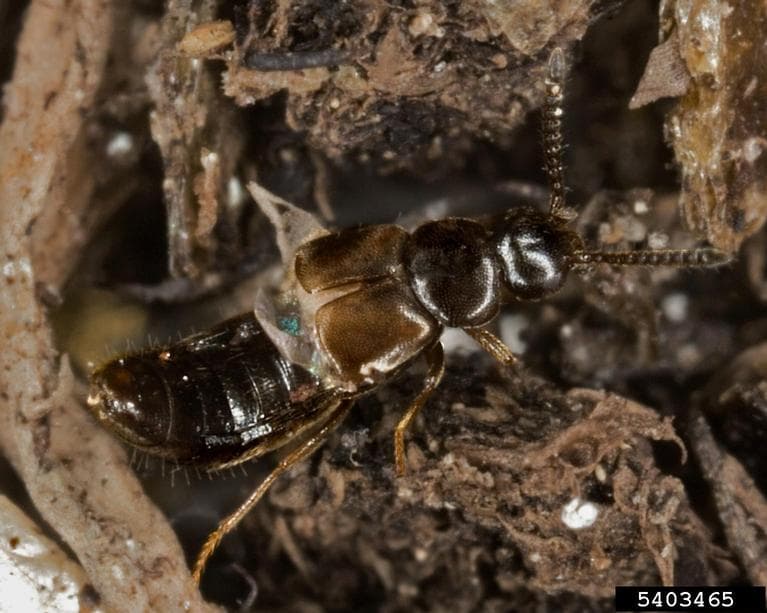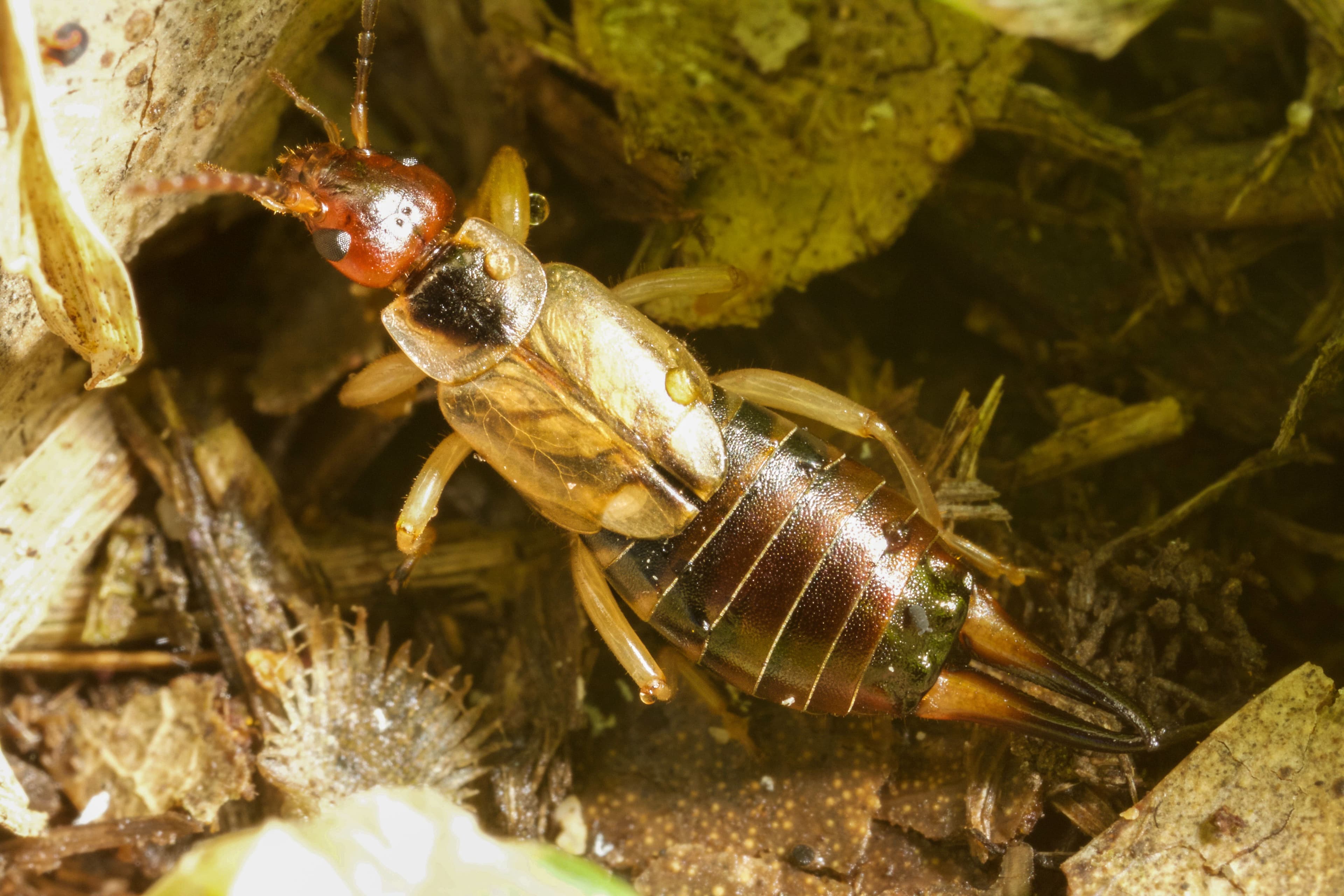Summary
Rove beetles (family Staphylinidae) are a diverse group of beetles with elongated bodies, typically black or dark brown. They possess prominent forward projecting chewing mouthparts that are adapted for consuming other insects and small invertebrates. While they may resemble earwigs in shape, rove beetles lack caudal pincers.
In contrast to many beetles, rove beetles have abbreviated wing covers that expose a significant portion of their abdomen. They range in size, spanning from a few millimeters to several centimeters.

Diet
Rove beetles are highly beneficial natural predators known for their aggressive feeding behavior. They prey on many agricultural pests such as aphids, mites, caterpillars, weevils, and other soft bodied insect larvae.
Pests attacked*
*with pesticide resistance
Monitoring guidelines
It may be difficult to find rove beelte through visual monitoring, they are highly mobile and will quickly disperse and many species are soil dwelling.
Adults can sometimes be seen walking or running along the ground, or they may also show up on yellow sticky traps if these are used to monitor pests.
The larvae of the Dalotia species can be detected using the potato test. This involves placing slices of raw potato with the cut side facing down onto the ground. The potato slices serve as an attractant for both Dalotia larvae and fungus gnat larvae, making it possible to monitor them visually.
Other species may be sampled and collected using alternative methods such as a beat sheet, sweep net sampling, or pitfall traps.
Sweep net: Hold the handle of the sweep net and make sweeping motions through crop. Move the net back and forth in a semi-circular or figure-eight pattern to capture insects present in the vegetation.
Beat sheet: A sheet between 1.3-1.5 m wide by 1.5-2.0 m deep, made of yellow or white tarpaulin with a sturdy stick attached to each end. To use it, place one edge of the sheet at the base of the plants in the row you want to check. Hang the other end over the adjacent row or against the base of the next row for wider spacings. Hold the stick at both ends and shake the plants vigorously 5-10 times to dislodge insects onto the sheet. This process should be repeated at four different non-consecutive lengths of row within a 20-meter radius.
Pitfall traps: A pitfall trap is a container set in the ground so that their rims are level with or slightly below the soil surface to capture ground dwelling insects. Fill them with a killing or preserving liquid such as pet-safe antifreeze, soapy water, or ethyl alcohol to prevent escape or predation within the trap. Regularly check traps for captured insects,
Habitat management
Some agriculturally important species, such as the Dalotia rove beetle, can be bought commercially.
Rove beetles contribute to pest management in various agricultural landscapes across Australia, including grain fields, orchards, vineyards, and vegetable crops. Thriving in moist habitats associated with soil or decaying organic matter, they are particularly valuable in areas with soil saturation or standing water.
Rove beetles can be found under debris or rocks, in compost piles, or crawling on plants. Some agriculturally significant species, like the Dalotia rove beetle, live in the upper layers of soil and can establish in different growing media such as compost, potting mixes, coconut coir, and rock wool.
These beetles are very resilient and can cope with a wide range of conditions. However, excessive use of pesticides can be detrimental to rove beetle populations and their effectiveness as biological control agents. Consider adopting integrated pest management (IPM) practices, which involve using pesticides judiciously and as a last resort. Targeted application of pesticides, avoiding broad-spectrum ones, and selecting insecticides that have minimal impact on non-target organisms can help preserve rove beetle populations.
Creating diverse habitats with hedgerows, cover crops, brushpiles and wildflower strips can support generalist predator population, by providing additional food sources, nesting sites, and protection from pesticide exposure or extreme weather conditions.
Breeding boxes have shown promise in enhancing rove beetle performance in hydroponic, ornamentals and floriculture overseas, however this approach is not yet widely practiced in Australia.
While rove beetles offer numerous benefits, their impact can vary depending on local species composition, farm management practices, and regional factors.
Chemical toxicity
To assist growers and advisors in making informed choices around insecticide use in Australian grain crops, the below table summarises the toxicity of foliar chemical sprays on rove beetles.
The impact ratings in the table are colour-coded, indicating the level of impact on beneficial insects. The colour scheme is as follows:
- Green: low impact (<30% mortality)
- Yellow: moderate impact (30-79% mortality)
- Orange: high impact (80-99% mortality)
- Red: very high impact (>99% mortality)
Data shown here is directly from the Beneficials Chemical Toxicity Table.
Ratings for toxicity are based on International Organisation for Biological Control (IOBC) protocols for laboratory studies and reflect percent mortality of insects.
These values represent mortality under controlled laboratory conditions – impacts may vary in the field, especially if multiple applications of a chemical occur.









